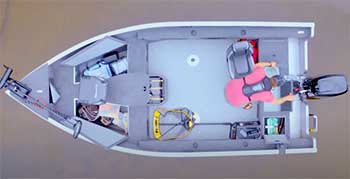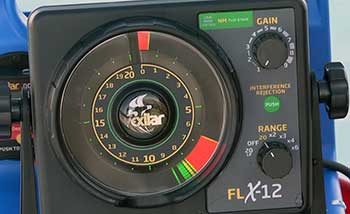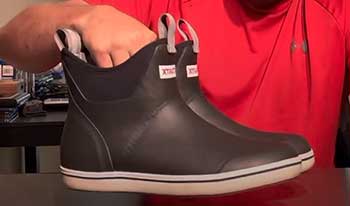I’ve spent countless hours on the water, rod in hand, chasing walleye, bass, and the occasional monster musky. As a lifelong angler, I know the boat you choose can make or break your day on the lake.
That’s why I’m pitting two heavyweights in the aluminum fishing boat world—Lund and Crestliner—against each other. My goal? To help you decide which brand deserves your hard-earned cash by breaking down their pros, cons, and key features in a way that feels like we’re chatting over a campfire.
Let’s get started.
A Brief Comparison Table
| Feature | Lund Boats | Crestliner Boats |
| Construction | Riveted aluminum, full-length I-Beam | Welded aluminum, heavy-gauge hulls |
| Hull Design | IPS hull for superior handling, stability | Deep-V and modified-V for rough water |
| Price Range | Premium, $30,000-$80,000+ | Mid-to-premium, $25,000-$70,000 |
| Resale Value | High, retains value well | Good, slightly less than Lund |
| Warranty | Lifetime on hull, transom | Limited lifetime on hull, structure |
| Fishing Features | Ample rod storage, live wells, fish finders | Spacious live wells, trolling motor options |
| Customization | Extensive options, SportTrak system | Moderate options, focus on angler needs |
| Performance | Excellent stability, smooth ride | Strong handling, fuel-efficient |
| Comfort | Premium layouts, ergonomic seating | Functional, slightly less refined interiors |
| Reputation | Top-tier, angler-driven innovation | Reliable, innovative, slightly less prestige |
My Journey With Aluminum Fishing Boats
I’ve been fishing since I could hold a rod, and over the years, I’ve piloted everything from beat-up Jon boats to high-end fiberglass rigs. But aluminum boats?
They’re my sweet spot—light enough to trailer easily, tough enough to handle rough waters, and versatile for everything from fishing to tubing with the kids.
Lund and Crestliner have long been the gold standard in this space, and I’ve had the chance to fish from both. Each has its own personality, and choosing between them feels like picking a favorite fishing spot—both are great, but it depends on what you’re after.
Lund boats, born in Minnesota in 1948, have a cult-like following among anglers. Their riveted hulls and angler-centric designs scream quality. Crestliner, also a Minnesota native since 1946, leans on welded construction and a reputation for bombproof durability.
Both brands are now under the Brunswick umbrella, but they maintain distinct identities. I’ve fished from a Lund Impact 1850 XS and a Crestliner Super Hawk 1850, and let me tell you, both made me feel like I was king of the lake.
But which one’s right for you? Let’s break it down.
Construction of Lund And Crestliner

The biggest talking point in the Lund vs. Crestliner debate is construction—specifically, riveted versus welded hulls. Lund swears by rivets, using high-quality aluminum (0.143 gauge on hulls, 0.080 on bottoms) and a full-length I-Beam construction that makes their boats feel like tanks.
I remember banging into a submerged log in my Lund Impact, and the hull just shrugged it off. Rivets, when done right, create flexible, durable seams. The downside? Some folks worry about leaks over time, especially after years of pounding through choppy water.
I’ve never had an issue with my Lund leaking, but I’ve heard stories of older models needing a rivet tightened here or there.
Crestliner, on the other hand, goes all-in on welded hulls. Their boats use heavy-gauge aluminum, and the welds create a sleek, seamless look. When I fished on a Crestliner Super Hawk, I noticed how smooth the hull looked—no rivet heads to catch your eye.
Welds are less likely to leak, and Crestliner’s construction feels rock-solid. But there’s a catch: welds can crack under extreme stress, and fixing a cracked weld is pricier than replacing a rivet. I’ve heard of Crestliners developing hairline cracks near welds, though it’s rare and usually tied to heavy abuse.
- Lund Pros: Riveted construction is time-tested, easier to repair, and paired with high-quality materials. Their I-Beam system adds unmatched structural support.
- Lund Cons: Potential for rivet leaks over decades, slightly boxier aesthetic.
- Crestliner Pros: Welded hulls are sleek, less prone to leaks, and built for durability.
- Crestliner Cons: Weld repairs are costlier, and some report cracks in high-stress areas.
Hull Design & Performance of Lund And Crestliner
A boat’s hull is its soul, and both Lund and Crestliner know how to craft a good one. Lund’s Integrated Power Strake (IPS) hull design is a game-changer. It’s like the boat glides on rails—smooth, stable, and responsive.
I took a Lund Pro-V 1875 through some nasty chop on Lake Erie, and it handled like a dream, cutting through waves without jarring my spine. The deeper center keel gives you precision steering, whether you’re trolling for walleye or racing across a lake.
Lund’s focus on fuel efficiency also means you’re not burning through gas like a monster truck.
Crestliner’s Deep-V and modified-V hulls are built for big water. Their designs prioritize stability and a smooth ride, especially in rough conditions.
I remember fishing a Crestliner Vision 1750 on a windy day, and the boat stayed steady, letting me focus on my cast instead of gripping the rail. Crestliner’s hulls are slightly lighter than Lund’s, which can translate to better fuel economy, but I found the ride a touch less refined in extreme conditions compared to Lund’s IPS.
- Lund Pros: IPS hull offers superior handling and stability, excellent for big lakes.
- Lund Cons: Slightly heavier, which can affect towing with smaller vehicles.
- Crestliner Pros: Lightweight hulls improve fuel efficiency, great for rough water.
- Crestliner Cons: Ride can feel less polished in extreme chop compared to Lund.
Fishing Features: The Angler’s Toolbox

As an angler, I judge a boat by how well it supports my fishing obsession. Lund boats are like a tackle box on steroids. Their storage is unreal—multiple rod lockers (some holding 8-foot rods), side storage, deck-level compartments, and console drawers.
My Lund Impact had a spot for everything, from my favorite crankbaits to my trusty pliers. Standard features like the SportTrak system let you mount rod holders or downriggers anywhere, and the live wells come with oxygenators to keep fish fresh.
The included Lowrance Hook 3 fish finder isn’t top-tier, but it gets the job done for most weekend warriors.
Crestliner doesn’t skimp on fishing features either. Their boats pack spacious live wells, rod storage, and under-seat compartments. My buddy’s Crestliner Super Hawk had a slick setup with a Minn Kota trolling motor and a Lowrance fish finder that made finding fish a breeze.
Crestliner’s layouts are angler-friendly, with options for bait stations and trolling motors. However, I found Lund’s storage slightly more intuitive, especially for long rods. Crestliner’s customization options are solid but don’t match Lund’s versatility.
- Lund Pros: Unmatched storage, SportTrak system, angler-focused design.
- Lund Cons: Base fish finder is average, requires upgrades for serious anglers.
- Crestliner Pros: Great live wells, trolling motor options, functional layouts.
- Crestliner Cons: Storage slightly less versatile than Lund’s.
Comfort and Amenities of Lund And Crestliner

Fishing is my passion, but I also want to be comfortable when I’m out for hours. Lund boats feel like a step above in this department. Their seats are plush, with ergonomic designs that make long days bearable. The layouts are intuitive, with plenty of room to move around.
My Lund Impact had a convertible bow that let my daughter sprawl out while I fished, and the windshield kept us dry in a surprise rain. Lund’s attention to detail—like snap-in covers for storage—makes the experience feel premium.
Crestliner boats are no slouches, but their interiors feel a bit more utilitarian. The seats are comfortable, but not quite as cushy as Lund’s. The Super Hawk I fished on had a functional layout, but it lacked the polished feel of a Lund.
That said, Crestliner’s full windshield models provide a dry ride, and their designs cater well to families who want to fish and tube. If you’re after a no-frills boat that still gets the job done, Crestliner delivers.
- Lund Pros: Premium seating, intuitive layouts, family-friendly options.
- Lund Cons: Higher price can feel steep for casual boaters.
- Crestliner Pros: Functional comfort, great for mixed-use (fishing and recreation).
- Crestliner Cons: Interiors less refined than Lund’s.
Price and Value Comparison
Let’s talk money. Lund boats are pricey—there’s no sugarcoating it. A new Lund Pro-V 1875 can easily hit $50,000-$80,000, depending on options. My Lund Impact set me back more than I’d planned, but the lifetime hull warranty and resale value softened the blow.
Lunds hold their value like a blue-chip stock; I sold my old Lund for nearly what I paid after five years. The quality materials, like High-Density Performance composite transoms and closed-cell foam, justify the cost for serious anglers.
Crestliner boats are generally more affordable, with models like the Super Hawk ranging from $25,000-$70,000. They offer a limited lifetime hull warranty, and their resale value is strong, though not quite at Lund’s level.
When I priced out a Crestliner, I found I could get a comparable setup for about $10,000 less than a Lund. For budget-conscious boaters, Crestliner feels like a better deal, but you might miss some of Lund’s premium touches.
- Lund Pros: Exceptional resale value, lifetime warranty, premium materials.
- Lund Cons: High upfront cost, not ideal for casual boaters.
- Crestliner Pros: Better value for the price, solid warranty.
- Crestliner Cons: Slightly lower resale value, fewer premium features.
Resale Value and Longevity of Lund And Crestliner

One of the biggest factors in my boat-buying decisions is resale value.
Lund boats are the gold standard here. Their reputation for quality means they hold their value like few others.
I’ve seen 10-year-old Lunds sell for 80% of their original price, especially if well-maintained.
The riveted construction, while debated, has proven durable for decades, and Lund’s lifetime warranty on hulls and transoms gives peace of mind.
Crestliner boats also hold their value well, but they don’t quite match Lund’s resale prowess. A used Crestliner Super Hawk might fetch 60-70% of its original price after a decade.
Their welded hulls are built to last, and I’ve seen older Crestliners still running strong on Lake Powell. Both brands are durable, but Lund’s brand loyalty gives it an edge in the used market.
- Lund Pros: Top-tier resale value, proven longevity.
- Lund Cons: Higher initial cost impacts budget.
- Crestliner Pros: Strong longevity, good resale value.
- Crestliner Cons: Resale value lags slightly behind Lund.
Customer Service and Dealer Network
Owning a boat isn’t just about the boat—it’s about the support you get. Lund’s dealer network is extensive, and their customer service is top-notch. When I had an issue with my Lund’s wiring, the dealer fixed it under warranty, no questions asked.
Lund’s website is a treasure trove of resources, and their partnership with Mercury Marine ensures reliable engine options.
Crestliner’s dealer network is solid, especially in the Midwest, and their customer service is reliable. I’ve heard fewer glowing reviews about Crestliner’s support compared to Lund, but my buddy had no issues getting his Super Hawk serviced.
Both brands benefit from Brunswick’s backing, but Lund feels a bit more polished in this area.
- Lund Pros: Excellent customer service, wide dealer network.
- Lund Cons: Limited engine options (mostly Mercury).
- Crestliner Pros: Reliable support, good dealer network.
- Crestliner Cons: Slightly less polished service experience.
My Experience With Lund And Crestliner
To give you a sense of how these boats stack up, let me share a couple of days on the water. Last summer, I took my Lund Impact 1850 XS to Lake Michigan for some walleye fishing. The IPS hull sliced through 3-foot waves like butter, and the storage kept my gear organized.
The live well kept my catch fresh, and the SportTrak system let me reposition rod holders on the fly. The only downside? The stock fish finder struggled in deep water, so I upgraded to a better unit.
A few months later, I joined a friend on his Crestliner Super Hawk 1850 for a bass fishing trip. The welded hull felt sturdy, and the Minn Kota trolling motor made precise movements a breeze. The boat handled well, though it rocked a bit more in choppy water than my Lund.
The storage was good, but I missed the Lund’s extra rod lockers. Both boats were a blast, but the Lund felt like a luxury SUV, while the Crestliner was a reliable pickup truck.
Which Boat Is Right For You?
Choosing between Lund and Crestliner depends on your priorities. If you’re a serious angler who values premium features, top-tier resale value, and a buttery-smooth ride, Lund is your boat.
The higher price stings, but it’s an investment that pays off over time. If you want a durable, versatile boat that’s easier on your wallet and still delivers on fishing features, Crestliner is a fantastic choice. Both brands are built to last, and you can’t go wrong either way.
For me, Lund’s edge in storage, ride quality, and resale value makes it my pick for long-term ownership. But if I were buying on a tighter budget, I’d happily take a Crestliner out for a spin.
Take both for a test drive, think about your fishing style, and consider how long you plan to keep the boat. Your perfect day on the water is waiting.
Also Read: Comparison of Lund And Alumacraft Fishing Boats.
Frequently Asked Questions (FAQ)
No, Crestliner and Lund are separate brands, but both are owned by Brunswick Corporation. They’re built in the same facility in Minnesota, but each maintains its own design and construction philosophy.
Lund boats use high-quality materials like thick aluminum and composite transoms, plus advanced hull designs and extensive customization options. Their reputation and resale value also drive up the price.
Not necessarily. The premium price reflects superior craftsmanship, durability, and features tailored for serious anglers. If you’re a casual boater, the cost might feel steep compared to alternatives.
For serious anglers, absolutely. Lund’s durability, resale value, and fishing-focused features make it a smart investment. For occasional boaters, Crestliner might offer better value.
Wrapping Up
You’re standing at the crossroads of a big decision, and I’ve been there—staring at Lund and Crestliner boats, wondering which one will make my fishing dreams come true. Lund’s premium quality, unmatched storage, and stellar resale value make it a favorite for dedicated anglers like me.
Crestliner’s welded hulls, affordability, and solid performance are hard to beat if you’re balancing budget and function. Whichever you choose, you’re getting a boat built by folks who know fishing. Hit the water, test them out, and pick the one that feels like home.
Happy fishing!

